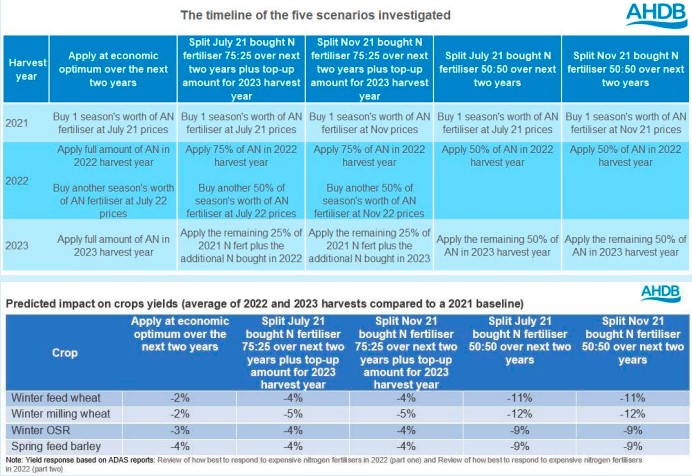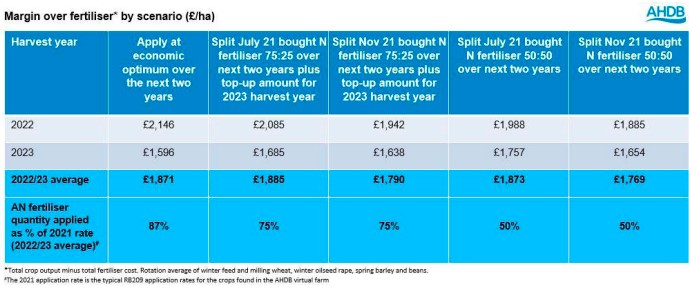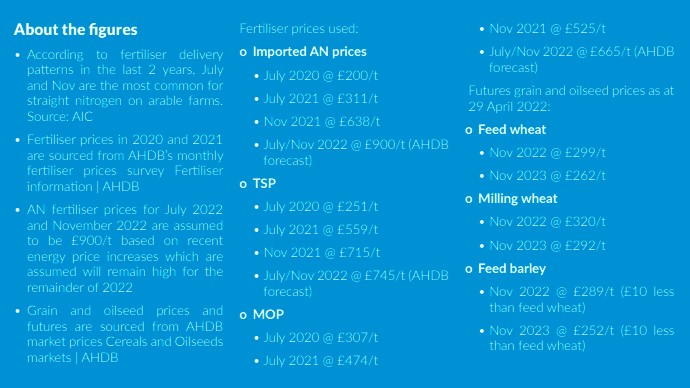Written by Mark Topliff – Lead Analyst: Farm Economics

It’s been a challenging time for growers wondering what to do around their fertiliser buying and application strategies off the back of higher prices over the last few months. However, using one of AHDB’s virtual farm models, analysis of the most common approaches shows that you won’t go far wrong with any of them.
Five scenarios were explored based on three main approaches:
1. applying at the usual economic recommended amount in 2022 and 2023,
2. apply 75% of the typical application rate each harvest year 2022 and 2023 0. using July 2021 and 2022 fertiliser prices or 1. using November 2021 and 2022 fertiliser prices
3. apply 50% of the typical application rate each harvest year 2022 and 2023 0. using July 2021 fertiliser prices or 1. using November 2021 fertiliser prices
The virtual farm crops 428ha with 66% down to feed and milling winter wheats, 8.5% winter beans, 7% winter oilseed rape and 18.5% spring feed barley. The analysis used this rotation to examine five potential nitrogen (N) fertiliser strategies. Results were calculated as total crop output minus total fertiliser cost – margin over fertiliser. The figures also took into account the impact on yields and futures prices of grains and oilseeds. Yields were predicted to fall 2% under the economic optimum for winter feed wheat compared to 11% if AN (ammonium nitrate) fertiliser was applied at half rate. For winter rape this was a decline of 3% under the economic optimum and a fall of 9% if AN applied at 50% of the typical amount.
When averaged over 2022 and 2023 harvest years there was no real difference between the margins over fertiliser for the three scenarios where AN fertiliser was bought on July 21. Between £1,871 to £1,885/ha. The highest margin being due to higher use of N fertiliser in OSR and barley and hence less impact on yields. It was no surprise that scenarios 2b and 3 b’s margins at £1,814 and £1,769/ha respectively were lower if fertiliser was bought at the higher prices in November 2021.
The right strategy will depend on the attitude to risk to yields and where you feel fertiliser and grain prices will go over the next 18 months or so. However, according to this scenario analysis, there is no significant difference between these expected common approaches. So whether fertiliser was purchased before the higher prices of late or not, some judicious reduction in application rates will pay off.


